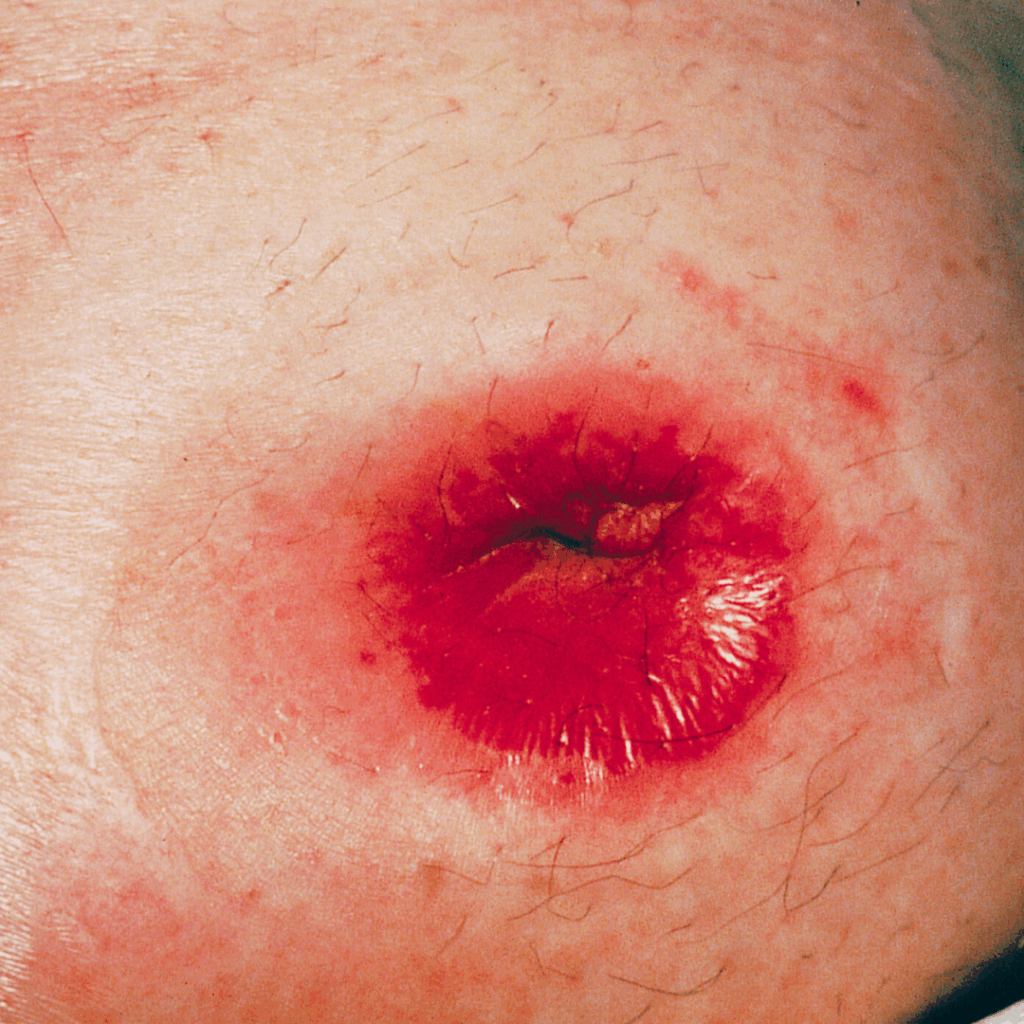Living with a stoma can come with challenges, including potential complications like prolapse, stenosis, and retraction. Recognizing the signs early and understanding how to manage these conditions is essential for maintaining comfort, health, and quality of life.
Stoma Prolapse

A stoma prolapse occurs when the bowel extends further through the stoma than usual, making it appear longer or more swollen than normal (usually over 2cm longer than when initially created). Keep in mind that it is normal for your stoma to change in length slightly throughout the day. A prolapsed stoma can occur with a colostomy, ileostomy, or urostomy. This can be concerning, but is often manageable.
Causes
- Activities like heavy lifting, coughing, or straining. These increase abdominal pressure.
- Weak abdominal muscles.
- Significant weight gain.
- Pregnancy.
- Constipation.
- Surgical technique (such as a large incision in the abdominal wall).
Signs and Symptoms
- Increased protrusion of the stoma.
- Pain or discomfort around the stoma site.
- Difficulty fitting or sealing ostomy appliances.
- Skin irritation due to leakage.
Management
- To try to reduce the stoma. Lie down on your back and relax for about 20 minutes, which relaxes your abdominal muscles. Another option is applying gentle pressure and a cold compress directly over the stoma to reduce swelling. Do not do this for more than 15 minutes.
- Be gentle when cleaning and changing your appliance.
- Use support garments or belts to help keep the stoma in place.
- In some cases, surgical intervention may be necessary if complications arise as a result of the prolapse, such as bowel obstruction, incarceration (the tissue protruding gets stuck and cannot be easily reduced), or strangulation (a prolapsed stoma cuts off blood supply to the rest of your intestines).
- Sometimes, a prolapsed stoma may slide back through the stoma on its own. However, it’s still best to let your nurse specializing in wound, ostomy, and continence (NSWOC) or healthcare provider know.
- Signs to go to the emergency department include: the stoma is discoloured (such as blue, purple, brown, gray, or black), feels cool to touch, or your stoma is bleeding and won’t stop. You have no stool output for several hours with nausea, vomiting, or abdominal pain/cramping.
Stoma Stenosis

Stoma stenosis occurs when the stoma’s opening narrows, making it difficult for waste to pass through. Stenosis can occur with an ileostomy, colostomy, or urostomy. It generally occurs more than 30 days postoperatively.
Causes
- Excessive scar tissue formation.
- Infections or inflammation around the stoma.
- Radiation therapy affecting the stoma area.
- Poor healing after surgery.
- Crohn’s disease and/or colostomies have a higher rate of stenosis.
Symptoms
- Reduced output.
- Abdominal cramping or discomfort.
- Swelling around the stoma.
- Urostomy patients may have frequent urinary infections, projectile urine stream, or flank pain.
Management
- Mild cases with minimal symptoms and impact on functioning may be managed with dietary changes or stool softeners. Consult with your NSWOC or healthcare provider for guidance and support.
- Dilation procedures can be performed to widen the stoma opening; these can be explained by your provider.
- In some cases, surgical revision may be necessary in severe cases.
Stoma Retraction

Stoma retraction happens when the stoma sinks below the skin level. This can become problematic as it can affect the fit of your stoma bag and cause leaks. Late stoma retraction occurs weeks or months after surgery.
Causes
- Weight gain after surgery.
- Scar tissue pulling the stoma inward.
- Weak abdominal muscles or poor surgical technique.
Symptoms
- Stoma appears sunken or flush with the skin.
- Frequent leakage from the ostomy appliance.
- Skin irritation or breakdown around the stoma.
Management
- Convex ostomy appliances can be used to help the stoma protrude.
- Barrier rings or pastes can be applied to improve the seal.
- Consult with your NSWOC or healthcare provider for advice and support.
- In persistent cases, surgical revision may be necessary.
While stoma complications can be concerning, most are manageable with proper care and support. Regular follow-up with your healthcare provider or NSWOC can help address issues promptly and prevent further complications. Early recognition and appropriate management are key to living well with a stoma.
Source
By Erika Kana, RN, Content Writer, Ostomy Canada Marketing Team.

Hello, I’m Erika. I was born and raised in Calgary, Alberta. I attended Mount Royal University in Calgary and graduated with a 4.0 GPA. I took my NCLEX licensing exam in December of 2022 and became a registered nurse. I’ve worked as a nurse since and specialize in emergency medicine, with experience in medical-surgical nursing. I hope one day to work in pediatrics or neonatal intensive care nursing and eventually to work as a critical care transport nurse. I have also recently transitioned into the world of health content writing. I specialize in crafting content that simplifies complex medical topics, promotes wellness, and addresses common health concerns. My goal is to empower individuals with accurate and easy-to-understand information. I am also interested in wound, ostomy and continence nursing, which, combined with my love for writing, led me to volunteer with Ostomy Canada. In my spare time, I enjoy reading, hiking, playing with my dog (my beagle puppy), backpacking, doing yoga, running, and spending time with friends and family.
Learn more at https://www.erikakana.com/.





2 Responses
Good article, very helpful
I have a urostomy and I did not know about theses scenarios nor was I informed by my urologist that these could happen. Thank you for this article. Very informative about symptoms and what to look out for.